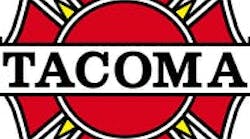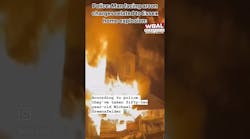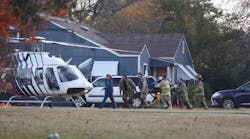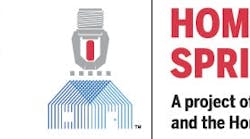When viewed as a cultural and operational framework and integrated into the foundation of an organization, integrated risk reduction (IRR) creates opportunities to build public and political trust. It also addresses recruitment and retention challenges and improves services to the end user across our service spectrum.
IRR moves the basic tenets of community risk reduction (CRR) into a more holistic organizational structure. Simultaneous to that, it provides pathways for strategic partnerships and the organizational culture to recognize and respond to the unprecedented change and enormous challenges that are associated with emergency mitigation, community engagement, recruitment and retention, and growth. Agencies that transition to an IRR framework are positioned not only to respond to such challenges but indeed thrive in this constantly changing environment. By leveraging the basic principles of CRR more broadly within one’s organization and with strategic partners, the IRR model emerges, and when that happens, it can provide numerous benefits.
Cultural transformation
The IRR framework provides a coherent pathway to “21st Century Fire and Emergency Services,” which was published by the Center for Public Safety Excellence and International City/County Management Association. The same can be said in regard to the National EMS Advisory Council’s “EMS Agenda 2050.”
These two white papers calibrate a massive stakeholder engagement to give everyone in the fire service and EMS a view to the future. However, the real value lies in the continued evolution of fire service organizational culture as we move to increasingly agile and creative ways to meet the needs of communities.
Mission & general alignment
Generally speaking, the people who compose the incoming workforce truly are interested in making a difference in the community, regardless of what that contribution looks like. Of course, we all enter this job to fight fire, but an integrated approach allows us to align and assign value to community needs in addition to fire suppression activities.
Clarity around the value proposition of our full range of services allows our workforce to respond to the full range of customer needs with enthusiasm and agility, because members better understand the importance and effect that they have in the community.
Furthermore, the best, or worst, recruiters for any organization are its current employees. Great culture breeds pride, ownership, and commitment to hiring and retaining the very best employees.
Trust and credibility
Built into the basic premise of CRR is the need to measure and improve the programmatic elements of the model. When we apply this more holistically, we bring forward coherent business needs that are measurable and accountable to elected officials, city/county/borough leadership and, ultimately, the community. This clarity of what we deliver, of how we measure effectiveness and of the accountability to report is powerful fuel for building strong trust relationships. It also allows us to grow, support, fund and resource operational needs far more effectively than do traditional models that solely rely on emotional pleas and broad best practices.Strategic partnerships
A key component of the CRR model is identifying stakeholders and engaging in partnerships. The days of being the jack of all trades—in other words, operating on an island—are over for most of us. The pace, scope and complexity of emergency response run away from our ability to scale with it by traditional methods.
An IRR approach points to strategic partnerships as a key to solving the complex problems that we face and to utilizing existing community infrastructure more effectively to help to manage the growing demand on many 9-1-1 systems. The fire service uniquely is positioned to provide leadership and direction in these partnerships. Typically, we are the tip of the spear in the community and carry a degree of rapport and trust within the areas that we serve.
Engaging the community
What does IRR look like structurally? How does an organization begin to move toward an integrated approach?
Community focus. Over the past two decades, thanks in large part to Chief Alan Brunacini, the fire service has made a significant investment in moving to a customer-service focus. IRR builds on that premise, as we consider what can be done before the call as well as structurally within the community to address the call type
Purpose-inspired. Modern leadership models repeat the mantra of articulating “why” in everything that we do. The incoming—and much of the current—workforce relies on the ability to comprehend not just what we are doing, but why. When we offer a compelling purpose for our organization, hearts and minds follow.
Future-ready. The fire service in the United States has evolved significantly over the past half-century. Since just 1980, the average fire volume for departments dropped to around 3 percent from roughly 27 percent. The challenges that we now face are both the rate and complexity of change as well as the broadest array of service demands in our history. Becoming future-ready involves a change in leadership mindset that sees the challenges that are in front of the fire service as an unprecedented opportunity to serve customers and provide measurable value to the community.
Change leadership. This will come as a surprise to some, but the bulk of our current workforce is more open to change than any previous workforce. That doesn’t translate to ease of change, but it speaks to the importance of change leadership.
Fire service leaders must move from traditional change-management models to a workforce-centered approach. This includes exceptional communication, employee empowerment and high levels of trust. Simple change algorithms and Gantt charts no longer are adequate to convey the “what and why” that’s necessary to lead the hearts and minds of our workforce in the effort to face current and future challenges in communities.
Measure of value. An IRR model relies on effective outcome measurements to explicitly demonstrate the value profile and effect of fire services and EMS.
How many lives did the members of your organization save last year? As a leader, if you aren’t able to answer that question, it’s time for you to start to focus on outcomes.
Additional performance indicators must include life and property protected and quality of life affected, to measure and communicate your full value to the community and to create the energy that’s necessary to engage a wide range of community partners.
Four focuses
When we lead our organizations with these building blocks as our foundation, a culture of excellence emerges—a culture that’s focused on agility, community effect, leadership and foresight.







